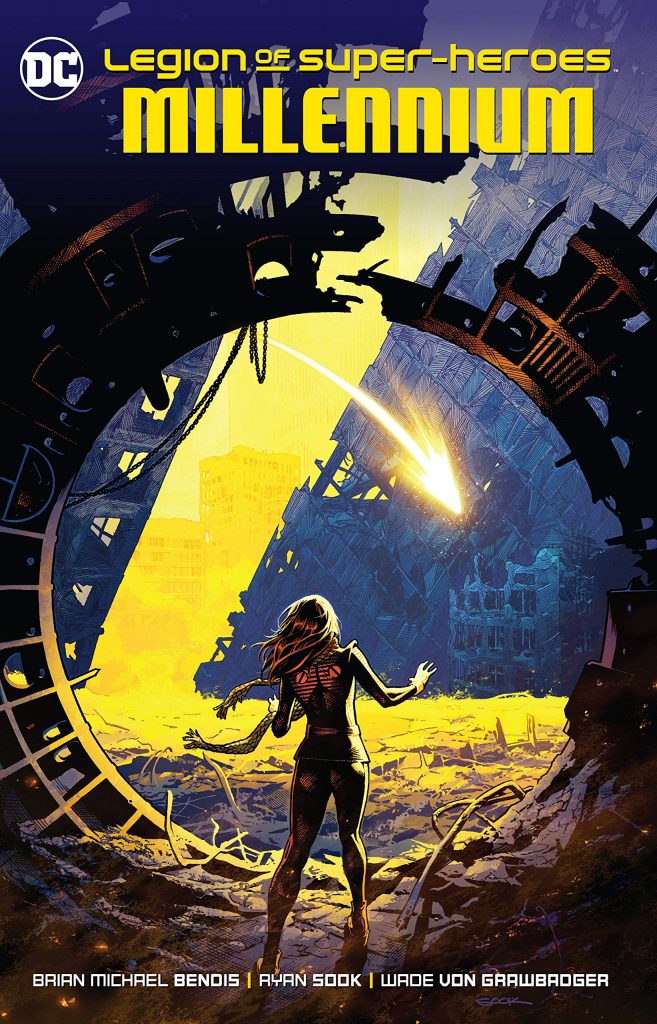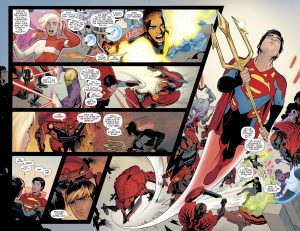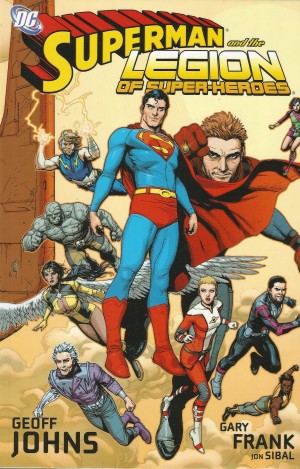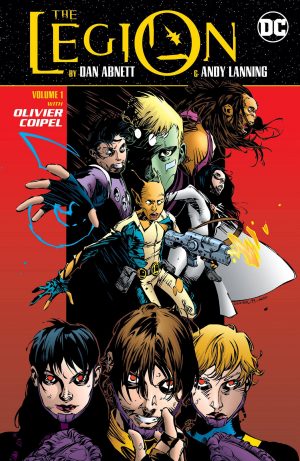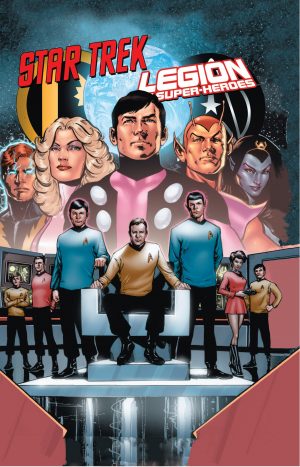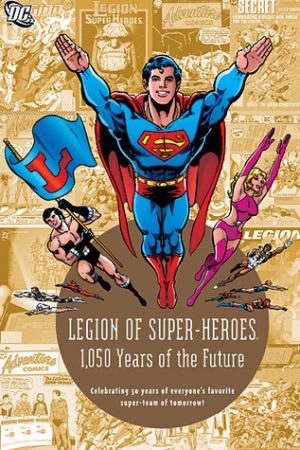Review by Frank Plowright
Wherever anyone might have expected yet another reboot of the Legion of Super-Heroes to begin, it surely wasn’t with the obscure Rose and Thorn character. It becomes stranger as in the company of assorted artists Brian Micheal Bendis tours assorted different manifestations of the future as seen in old DC titles. It’s not necessary to know that to enjoy the short stories, much less recognise them, as Rose Forrest wanders from one to the next, her Thorn personality occasionally manifesting, and it turns out that disorientation is a key component to this version of the Legion. That extends to the holographic identification signs displayed by each team member, always reversed, or at an angle. In short, this isn’t your average reader-friendly new series.
Once you move beyond the assorted artists contributing a few pages, it sure looks that way, though, with Ryan Sook filling the pages with Legionnaires and Jordie Bellaire’s colouring a vivid clash all the way through. Some redesigns apart, Sook’s art is reassuringly old fashioned, with a vast work ethic and solid storytelling. It’s a method adopted by the assorted artists who contribute story sections, opening with Jim Lee and also including, to name just three others, Nicola Scott, Mikel Janín and Scott Godlewski.
They’re patching together a densely conceptual interpretation of the 30th century super team featuring teenagers from planets the universe over. For starters it’s no longer just a bunch of white skinned kids no matter what planet they’re from, as if the universe was colonised by some form of human supremacists, although the membership remains pretty well humanoid straight down the line. Although each chapter begins by introducing a different Legionnaire, it’s not until two-thirds of the way through that Bendis gives his retuned founding of the Legion, before which we’ve been as puzzled as Jon Kent, Superboy, summoned from the 21st century to join the Legion. With Sook’s art, that’s a back to 1960s basics approach, underlined by plot taking precedence over character. Bendis returns to the days when dialogue could be pretty well interchangeable between the members of a DC super team, and updated versions of other non-Legion characters are seen.
The Legion of Super-Heroes is that it’s a concept much loved by the fans of the 1960s and 1970s, but which hasn’t held the same appeal for anyone since. It’s not the most obvious feature for Bendis to take on, and whether his pulling power can overturn the indifference to the concept remains to be seen. On the basis of Millennium, if some elements seem random (Rose Forrest), there’s enough solidity here to move forward, but the jury’s still out. The conclusion is found in The Trial of the Legion.
